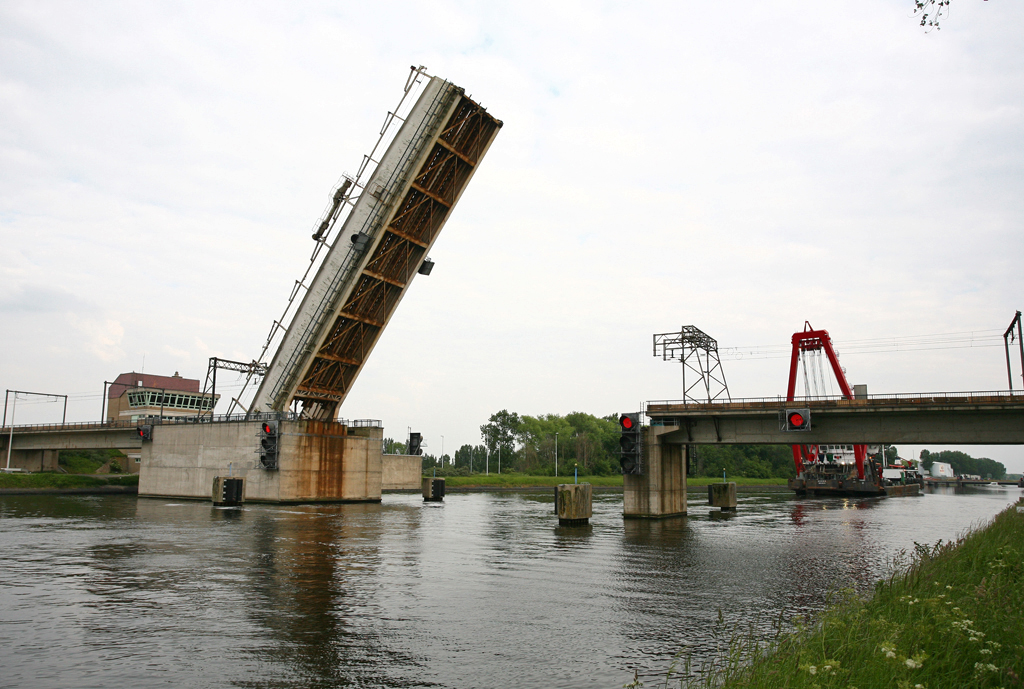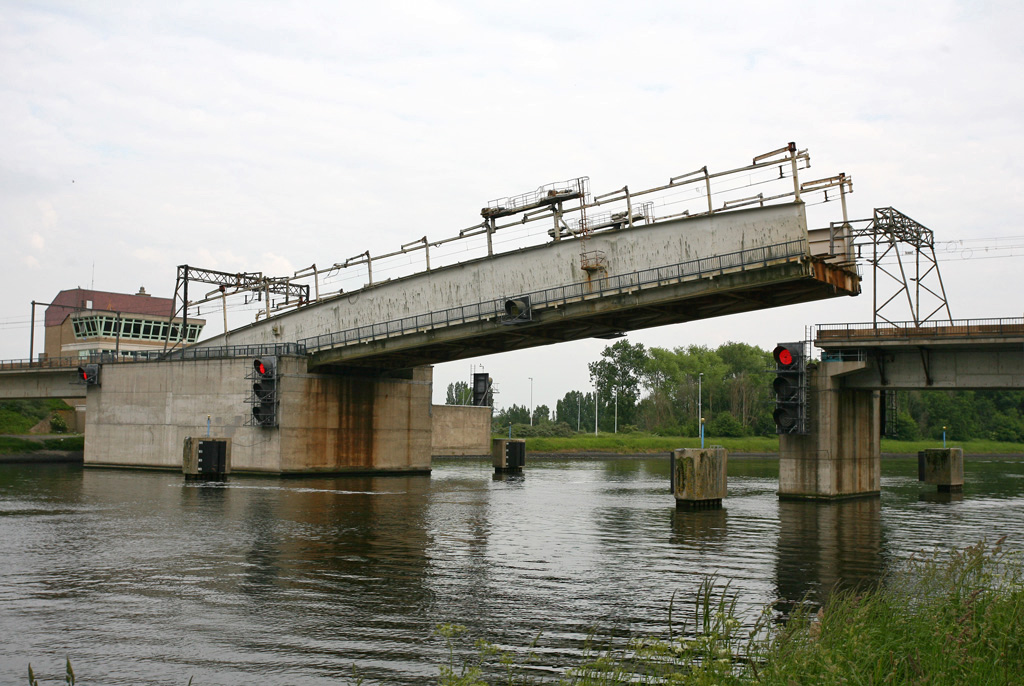Belgium - 22nd May 2008

During May 2008 I was given the opportunity to travel to Belgium at the invite of Infrabel on behalf of Railway Herald. The Invite was provided by Infrabel (The Belgian Railway Infrastructure Management Company) for the railway media to view the extensive upgrade work having been carried out on the Belgian railway network at its ports. Before attending a press conference in Ostendee. This short trip was an enthusiastic favour to assist with the popular online railway magazine, rather than a trip for pleasure.
This short gallery of images features the article written for the online magazine as a result of the guided tours of the Belgian port visits at Antwerpen, Oostende and Zeebruge.
This short gallery of images features the article written for the online magazine as a result of the guided tours of the Belgian port visits at Antwerpen, Oostende and Zeebruge.
Some of the projects announced by Infrabel have already been completed; others are planned for the coming years to steadily increase the effectiveness of the rail freight operations in Belgium.
The Ghent Curve
The largest of Belgium’s ports is Antwerpen, this port will see some of the most significant changes. One such project has already been completed. The ‘Ghent Curve’ has recently been commissioned and is in operation. Trains exiting from the Southern bank of Antwerpen Docks (Line 10) would normally run to Zwijndrecht via the Kennady Tunnel to run around their trains before returning towards Brugge & North West France via Line 59. The ‘Ghent Curve’ links Lines 10 & 59 allowing trains to arrive and depart direct onto Line 59 in either direction. This will save from 30 – 90 minutes on all train journeys using this route out of the Southern Docks complex. Infrabel has invested 10 million euros in this double track curve which will greatly improve the efficiencies of the Antwerpen Port operation on the South Bank.
The largest of Belgium’s ports is Antwerpen, this port will see some of the most significant changes. One such project has already been completed. The ‘Ghent Curve’ has recently been commissioned and is in operation. Trains exiting from the Southern bank of Antwerpen Docks (Line 10) would normally run to Zwijndrecht via the Kennady Tunnel to run around their trains before returning towards Brugge & North West France via Line 59. The ‘Ghent Curve’ links Lines 10 & 59 allowing trains to arrive and depart direct onto Line 59 in either direction. This will save from 30 – 90 minutes on all train journeys using this route out of the Southern Docks complex. Infrabel has invested 10 million euros in this double track curve which will greatly improve the efficiencies of the Antwerpen Port operation on the South Bank.

Deurganckdock
To give additional capacity to the Deurganckdock on the Southern Dock Bank, Infrabel has provided additional sidings amounting to an investment of 100 million euros and 153km of track. The Deurganckdock will provide additional container traffic from the Southern Bank which will be transported quickly in and out of the port using the previously mentioned ‘Ghent Curve’.
To give additional capacity to the Deurganckdock on the Southern Dock Bank, Infrabel has provided additional sidings amounting to an investment of 100 million euros and 153km of track. The Deurganckdock will provide additional container traffic from the Southern Bank which will be transported quickly in and out of the port using the previously mentioned ‘Ghent Curve’.
Perhaps the biggest planned investment for Antwerpen is the Liefkenshoek Tunnel Rail Link, which will directly link the South Bank to the North Bank, thus providing an internal link through the docks to Antwerp-Noord mashalling yard and the Netherlands. This will eliminate the need to operate trains via Antwerpen-Berchem which will free up valuable passenger paths in this area. This project will be financed by means of a Public Private Partnership for the construction works costing around 770 million euros. The railway infrastructure will be financed directly by Infrabel to the tune of 75 million euros. The PPP should be complete by the Autumn of 2008, Infrabel are confident that they will be able to commence works by the end of 2008 for completion in 2012.
Infrabel also plan to increase it’s capacity on the Antwerp – Germany route via the Iron Rhine by the end of 2012, the re-opening of the Iron Rhine is currently in discussion with various EU member states. But most agree a second route into Germany is a good link to make and will provide much needed capacity as a parallel but shorter line compared to the current Monzten route.
A second railway entrance will also be constructed between Antwerpen Noorderdokken Yard to transport larger volumes of freight onto the Leir – Aarschot line. The investment totals around 160 million euros.
Infrabel also plan to increase it’s capacity on the Antwerp – Germany route via the Iron Rhine by the end of 2012, the re-opening of the Iron Rhine is currently in discussion with various EU member states. But most agree a second route into Germany is a good link to make and will provide much needed capacity as a parallel but shorter line compared to the current Monzten route.
A second railway entrance will also be constructed between Antwerpen Noorderdokken Yard to transport larger volumes of freight onto the Leir – Aarschot line. The investment totals around 160 million euros.

Zeebrugge
The Port of Zeebrugge is considered of great strategic importance. Situated on the edge of the North Sea, the port is keen to promote it’s location to shipping companies. Zeebrugge is currently having a large expansion of rail marshalling yards. Voorhaven-West, Pelikaan, Ramskapelle, & Wielingen will all be expanded to cope with additional goods traffic. The large expansion of these rail yards equates to another 20 million euros which has been invested by Infrabel into the port infrastructure.
In order to further increase the capacity of the rail freight services operating to and from Zeebrugge, Infrabel is also planning to install a third track between Zeebrugge and Brugge. This route is currently largely taken up by a frequent passenger service. To help the line cope with additional freight services, Infrabel are investing another 130 million euros in a third track. It’s planned to start during 2011 and complete by 2016, although some initial works are already underway. Further to the additional track between Zeebrugge and Brugge, Infrabel also plans to double the track between Brugge and Ghent (Line 50A). Infrabel is aware of the projected growth of traffic from the Port of Zeebrugge and will increase their own railway network in phases to cope with the demand. This work stared in 1994 and is due for completion in 2018 at a further cost of nearly 400 million euros.
The Port of Zeebrugge is considered of great strategic importance. Situated on the edge of the North Sea, the port is keen to promote it’s location to shipping companies. Zeebrugge is currently having a large expansion of rail marshalling yards. Voorhaven-West, Pelikaan, Ramskapelle, & Wielingen will all be expanded to cope with additional goods traffic. The large expansion of these rail yards equates to another 20 million euros which has been invested by Infrabel into the port infrastructure.
In order to further increase the capacity of the rail freight services operating to and from Zeebrugge, Infrabel is also planning to install a third track between Zeebrugge and Brugge. This route is currently largely taken up by a frequent passenger service. To help the line cope with additional freight services, Infrabel are investing another 130 million euros in a third track. It’s planned to start during 2011 and complete by 2016, although some initial works are already underway. Further to the additional track between Zeebrugge and Brugge, Infrabel also plans to double the track between Brugge and Ghent (Line 50A). Infrabel is aware of the projected growth of traffic from the Port of Zeebrugge and will increase their own railway network in phases to cope with the demand. This work stared in 1994 and is due for completion in 2018 at a further cost of nearly 400 million euros.

Ghent Zeehaven Yard
Gent Zeehaven yard has also seen some modernisation/ investment from Infrabel. Semi Automatic sorting systems are being installed, which will give an increased output during shunting. Kluizendok is the other large project which will be carried out at the Port of Ghent during 2008 through to 2012. A brand new 16 track departure yard will be laid on the western side of the Kluizendok and will give a much needed capacity to this area of the docks.
Infrabel is currently at the forefront of railway infrastructure investment in Europe, their latest projects including the huge Antwerpen Station additional low level lines, through international lins and the full station restoration have really put Belgium on the map with regards to Railway Investment. Project Diablo at Brussells Airport, and the High Speed links to the Netherlands has also cemented the companies commitment to improving rail travel for passengers and important freight customers. Infrabel has certainly realised that developing their railway network will both benefit Belgium but also their relationship with their neighboring countries through European rail travel and transport.
Gent Zeehaven yard has also seen some modernisation/ investment from Infrabel. Semi Automatic sorting systems are being installed, which will give an increased output during shunting. Kluizendok is the other large project which will be carried out at the Port of Ghent during 2008 through to 2012. A brand new 16 track departure yard will be laid on the western side of the Kluizendok and will give a much needed capacity to this area of the docks.
Infrabel is currently at the forefront of railway infrastructure investment in Europe, their latest projects including the huge Antwerpen Station additional low level lines, through international lins and the full station restoration have really put Belgium on the map with regards to Railway Investment. Project Diablo at Brussells Airport, and the High Speed links to the Netherlands has also cemented the companies commitment to improving rail travel for passengers and important freight customers. Infrabel has certainly realised that developing their railway network will both benefit Belgium but also their relationship with their neighboring countries through European rail travel and transport.























